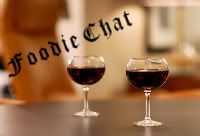We all know that vegetables, fruits, Wheat bread etc are healthy and very good for our body. But it is not the same always. We do not eat only vegetables and fruits. Most of our diet comprises of different variety of food - Frozen, ready to eat dinner, Bottled juices etc. How do we choose these to become a part of our diet? By reading the Food Label.
Are we reading it correctly? I have always had a doubt and most of the time have read the food label wrong. I would like to share the basic tips and techniques to read the food label. As an example I am taking the below food label from Heath.gov

The first thing to look for in a food label is the 'Serving Size'. It is the most important number in the Food label. In our example, it is 1 cup i.e. 228g. If you consume this amount of the food, then you will acquire the mentioned calories and other nutrients. If you are a person who consume double the amount, keep in mind that you will consume twice as much of calories and nutrients mentioned in the food label.
The next section covers the Total calories and the amount of calories from Fat. This number is very useful when you are on a Calorie Diet. A normal body requires nearly 2000 calories per day for men and nearly 1500 calories per day for women. You can plan your meal accordingly.
The next section shares the Total Fat, Cholesterol, Sodium, fiber, carbohydrates, potassium,Vitamins etc. This section is very useful when you are on all carbs diet or Fiber rich diet. It helps to calculate the amount of Fiber, Carbs etc intake.
Make sure you limit the intake of Fat, Sodium, Cholesterol as they are considered to be unhealthy. But do not cut on them completely as our body does require a minimum amount of fat, cholesterol and sodium.
Fiber, Iron, Vitamins and Potassium are good for health and is advised that you consume more of them.
Percentage Daily Value, as mentioned is based on a 2000 calorie diet. This value helps us to balance our diet. For example, if you eat a food which has more %daily value for Fat, then you have to compensate by eating a less %daily value food for that day. By this way your diet is balanced and you stay healthy.
The Food Label also has the ingredient list most of the time. These are the list of ingredients that are exactly present on the food product with the largest amount listed first. For example, if the first ingredient in the Cereal is Sugar and the next is grain, then the cereal is probably high in sugar.
Using the food label and your dietitians advice you can plan a balanced meal every day and stay healthy. Consult your doctor and discuss what your everyday meal should consists of and plan accordingly.
Are we reading it correctly? I have always had a doubt and most of the time have read the food label wrong. I would like to share the basic tips and techniques to read the food label. As an example I am taking the below food label from Heath.gov

The first thing to look for in a food label is the 'Serving Size'. It is the most important number in the Food label. In our example, it is 1 cup i.e. 228g. If you consume this amount of the food, then you will acquire the mentioned calories and other nutrients. If you are a person who consume double the amount, keep in mind that you will consume twice as much of calories and nutrients mentioned in the food label.
The next section covers the Total calories and the amount of calories from Fat. This number is very useful when you are on a Calorie Diet. A normal body requires nearly 2000 calories per day for men and nearly 1500 calories per day for women. You can plan your meal accordingly.
The next section shares the Total Fat, Cholesterol, Sodium, fiber, carbohydrates, potassium,Vitamins etc. This section is very useful when you are on all carbs diet or Fiber rich diet. It helps to calculate the amount of Fiber, Carbs etc intake.
Make sure you limit the intake of Fat, Sodium, Cholesterol as they are considered to be unhealthy. But do not cut on them completely as our body does require a minimum amount of fat, cholesterol and sodium.
Fiber, Iron, Vitamins and Potassium are good for health and is advised that you consume more of them.
Percentage Daily Value, as mentioned is based on a 2000 calorie diet. This value helps us to balance our diet. For example, if you eat a food which has more %daily value for Fat, then you have to compensate by eating a less %daily value food for that day. By this way your diet is balanced and you stay healthy.
The Food Label also has the ingredient list most of the time. These are the list of ingredients that are exactly present on the food product with the largest amount listed first. For example, if the first ingredient in the Cereal is Sugar and the next is grain, then the cereal is probably high in sugar.
Using the food label and your dietitians advice you can plan a balanced meal every day and stay healthy. Consult your doctor and discuss what your everyday meal should consists of and plan accordingly.












2 comments:
Wow definitely a useful post... Hats off for the good well done... I liked your post very much...
Hi Sangeeth, it's long time since I've been here. I see that you have changed your template. I'll send you a mail shortly.
Comprehensive information about reading the nutrition label. Thanks.
Post a Comment